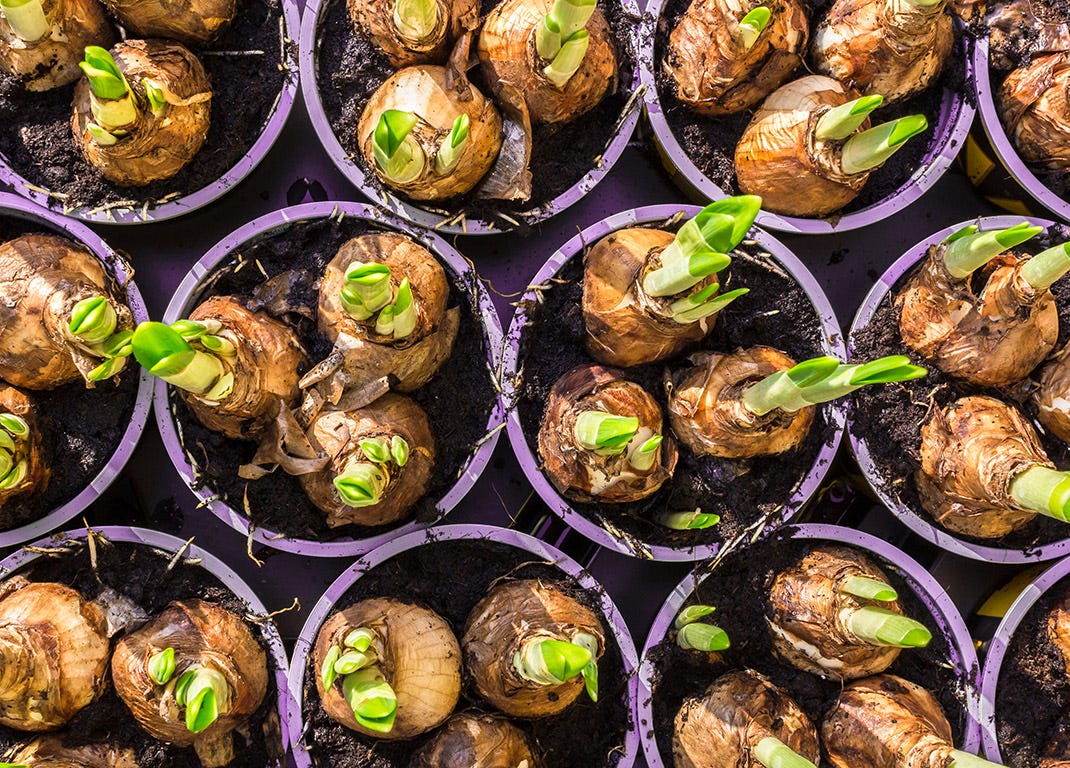
Growing plants and flowers in containers works well for every garden, no matter how big or small. Pots and troughs can be placed on window ledges, patios, balconies, and positioned as welcoming displays at your front and back door.
Plants grown in pots need a little extra care and attention than those grown directly in soil. This is because their ecosystem is contained, so they are completely reliant on the nourishment and hydration you provide.
Which plants can be grown in pots?
-
Herbaceous plants
-
Hardy bedding plants
-
Bulbs
-
Fruit
-
Vegetables
-
Shrubs
-
Trees
Best location
-
Place plants that need a lot of sunlight in south or west-facing locations that get at least six hours of sunlight a day.
-
Situate plants that require shade in a sheltered spot, which receives adequate shade throughout the day.
-
Protect delicate plants from the wind by positioning them against walls or fences.
-
Ensure all pots placed on balconies are securely fixed.
Type of container
-
As long as containers have adequate drainage, sufficient root depth and are large enough to give plants space to grow, you can use a variety of shapes and materials.
-
You can buy pots and troughs made from plastic, terracotta, wood, metal and recycled materials. Or you can get creative by upcycling old buckets, tins and crates.
Compost
-
If you have your own compost heap, make sure you sieve compost before adding it. Sieving removes clumps to ensure only finished compost is used. It also aerates and improves soil structure.
-
When buying compost, select multipurpose because it will be lightweight, nutrient-rich and good at retaining moisture - checking it's peat-free and sustainable.
-
Avoid using soil directly from your garden as it tends to be too heavy for potted plants, and there is a high chance of it containing weed seeds.
-
If you're growing perennials, replace the top layer with fresh compost every year.
Hydration
-
Water container plants regularly.
-
On very hot days, compost can dry out within a few hours, so make sure you provide enough water to penetrate the soil around the plant’s roots.
Fertiliser
-
Add liquid feed and slow-release fertilisers to your watering can every two weeks during the growing season.
-
Regular fertilising will help to ensure that potted plants receive all the nutrients they need to thrive.
